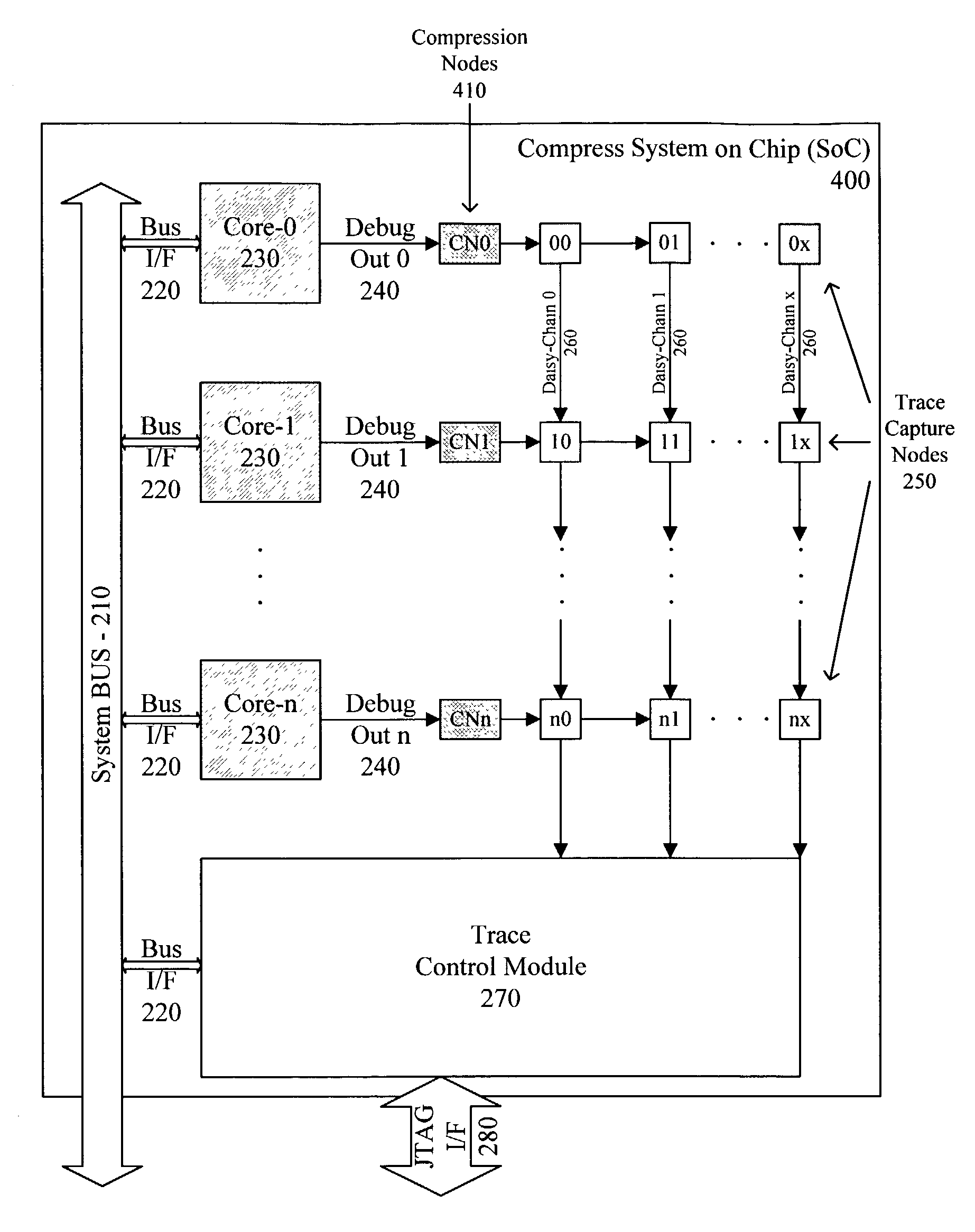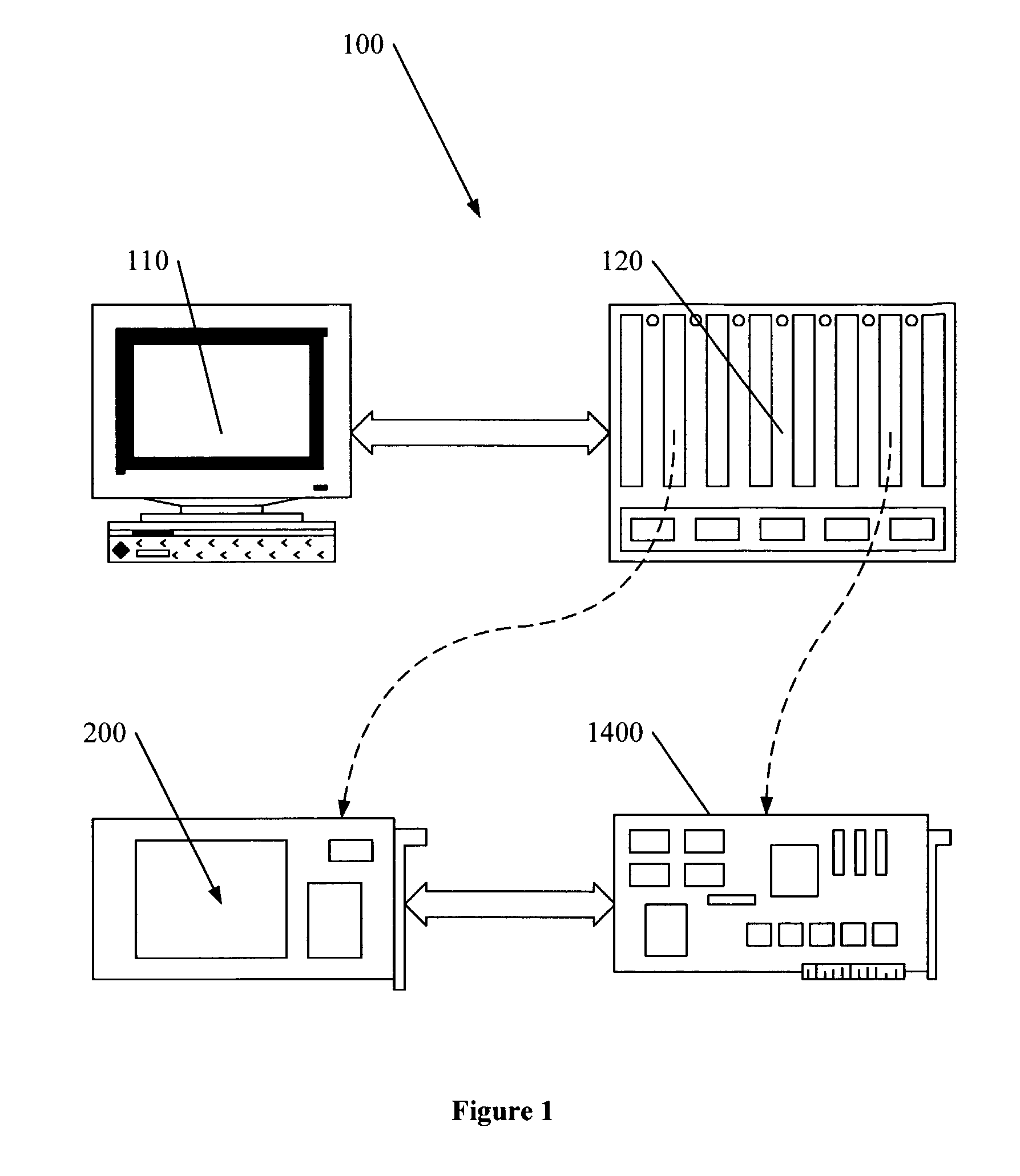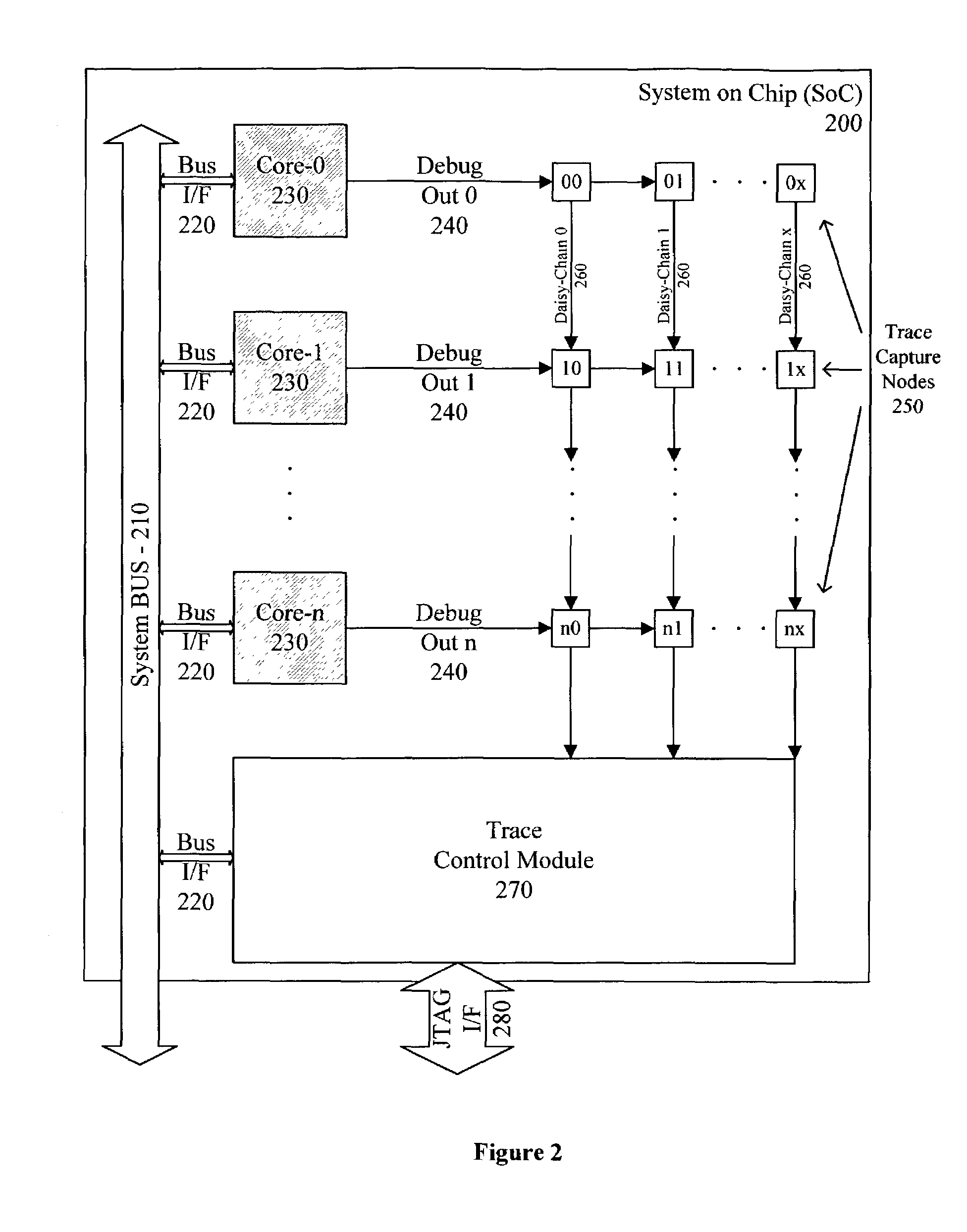Simultaneous real-time trace and debug for multiple processing core systems on a chip
a technology of multiple processing cores and applied in the field of simultaneous real-time trace data capture, can solve the problems of insufficient above strategies, trace can show problems in the programming of the processing core, point to errors in the processing core hardware, etc., and achieve the effect of facilitating simultaneous real-time trace data
- Summary
- Abstract
- Description
- Claims
- Application Information
AI Technical Summary
Benefits of technology
Problems solved by technology
Method used
Image
Examples
Embodiment Construction
[0038]The present invention will now be described in detail with reference to the accompanying drawings, which are provided as illustrative examples of preferred embodiments of the present invention and to enable those skilled in the art to practice the invention. Notably, the figures and examples below are not meant to limit the scope of the present invention. Moreover, where certain elements of the present invention can be partially or fully implemented using known components, only those portions of such known components that are necessary for an understanding of the present invention will be described, and detailed descriptions of other portions of such known components will be omitted so as not to obscure the invention. Further, the present invention encompasses present and future equivalents to the known components referred to herein by way of illustration.
[0039]FIG. 1 shows a presently preferred embodiment of the present invention that encompasses a system 100 for debugging a ...
PUM
 Login to View More
Login to View More Abstract
Description
Claims
Application Information
 Login to View More
Login to View More - R&D
- Intellectual Property
- Life Sciences
- Materials
- Tech Scout
- Unparalleled Data Quality
- Higher Quality Content
- 60% Fewer Hallucinations
Browse by: Latest US Patents, China's latest patents, Technical Efficacy Thesaurus, Application Domain, Technology Topic, Popular Technical Reports.
© 2025 PatSnap. All rights reserved.Legal|Privacy policy|Modern Slavery Act Transparency Statement|Sitemap|About US| Contact US: help@patsnap.com



